5 Steps to Creating a Customer-Driven Marketing Strategy
Check out our 5 recommendations on how to build a true customer-driven marketing strategy.
Written by Anastasiia Khlystova

There are two types of marketing strategies out there—product-driven and customer-driven. The first kind is built on the assumption that a great product will find its buyers, while the second is about understanding and satisfying people’s needs.
But it is difficult to offer something special nowadays, most product niches are well-developed. Thus, people choose brands ready to listen to them and provide exceptional service. Most marketing professionals see this shift. 67% of them deem customer-driven marketing strategy as “crucial” to their organization’s overall success.
However, building long-term relationships requires effort and resources. And even more so at the enterprise level. Let’s look at the practical steps you can take to make people fall in love with your brand. Buckle up!
So, what is a customer-driven marketing strategy?
A customer-driven marketing strategy means shifting focus from a product to its user and basing your marketing strategy, plans, and tactics on consumers’ needs and objectives in the first place.
As counterintuitive as it may sound, customer-driven marketing is not as much marketing as service and relationships with customers. Your main goal is to satisfy people, deliver exactly what they want, personalized experiences, and be as flexible for them as you can. You concentrate on your existing clients and retain them heavily.
No need to go far in the search for examples. HelpCrunch is a 100% customer-driven product with a corresponding marketing strategy.
The very idea of our tool emerged from thorough target market research. It showed that modern companies needed an affordable quality live chat tool with all the advantages of modern customer service software. So, the decision was made, and the product’s first version was created. What you see and use now results from customers’ reviews and requests.
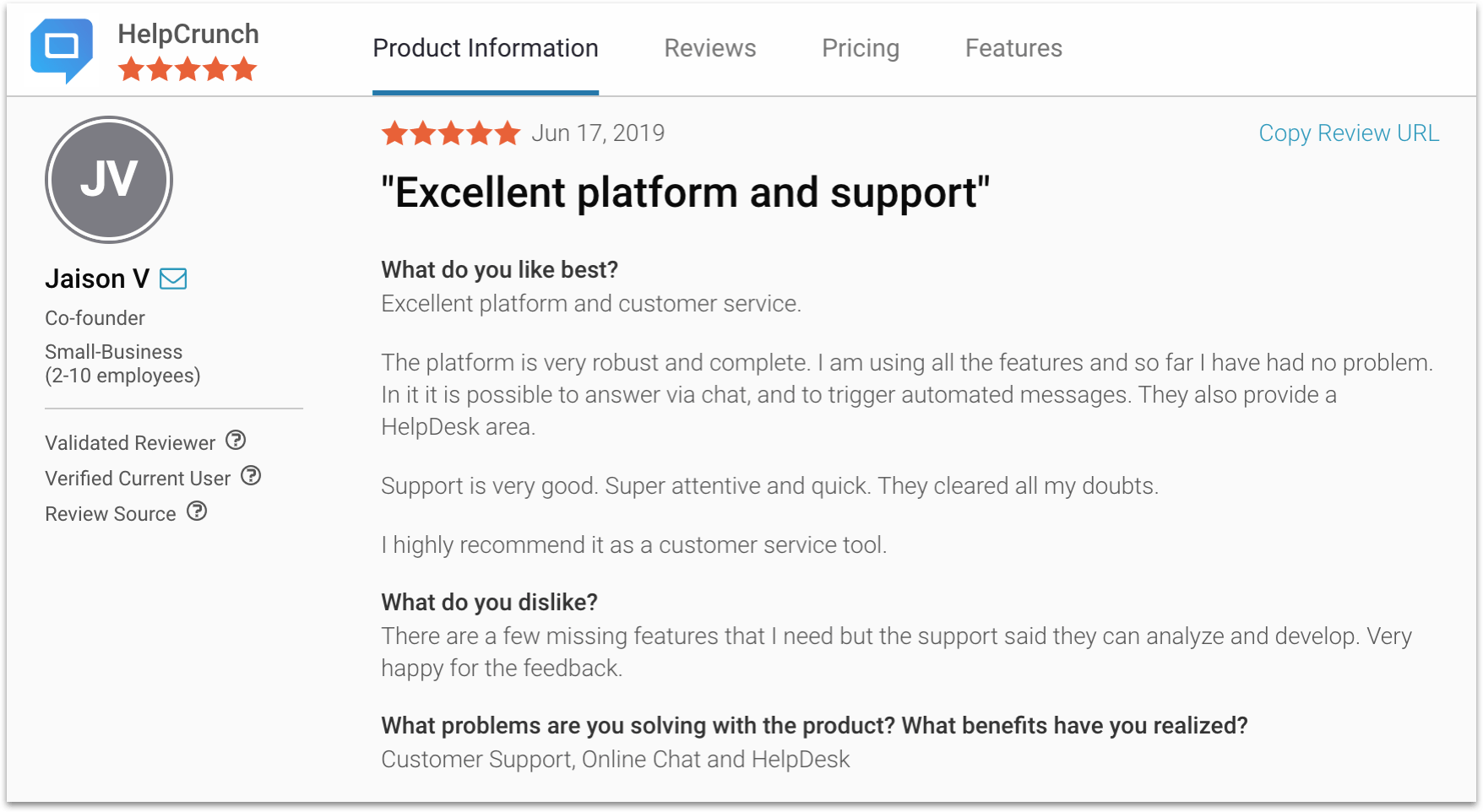
Kapost’s most recent report showed that today’s B2B organizations create 53% client-centric content and 47% product-centric content. A few years ago, B2B marketing strategies revolved primarily around products and services, but now the focus is on people.
Overall, the customer-centric approach is on the rise, and we should start paying more attention to it. So, how does one come around to adopting a successful customer-driven marketing strategy? Here are 5 key elements of the one:
1. Analyze your niche and create detailed buyer personas
It’s funny, but if you choose this path, your marketing strategy starts long before your product is created.
You need to have as much data about your clients as possible. Data can be collected through software tools or using customer surveys. This will allow you to segment and target your audience for your marketing efforts. Whether an email campaign or a PPC ad, their success depends on how precisely you can segment your customer base by relevant groups and give them what they want.
This brings us to the bread and butter of every marketing strategy in general and this one in particular—creating your marketing persona. I mean, if you’re putting all your eggs in one basket, you better research the hell of that basket and make sure it’s worth the effort.
So, how do you approach your buyer personas?
- Research your loyal customer base, conduct a couple of surveys and interviews, and gather their personal information.
- Look into your competition. For instance, you can simply read their case studies to know exactly who’s using their products and which goals they’re trying to achieve with them.
At the end of the day, you should come up with a description of your ideal client. For HelpCrunch, one of our buyer personas (because you can have several) looks like this:CMO/service manager of a small SaaS company of 10 employees looking for a live chat solution combined with email marketing software.
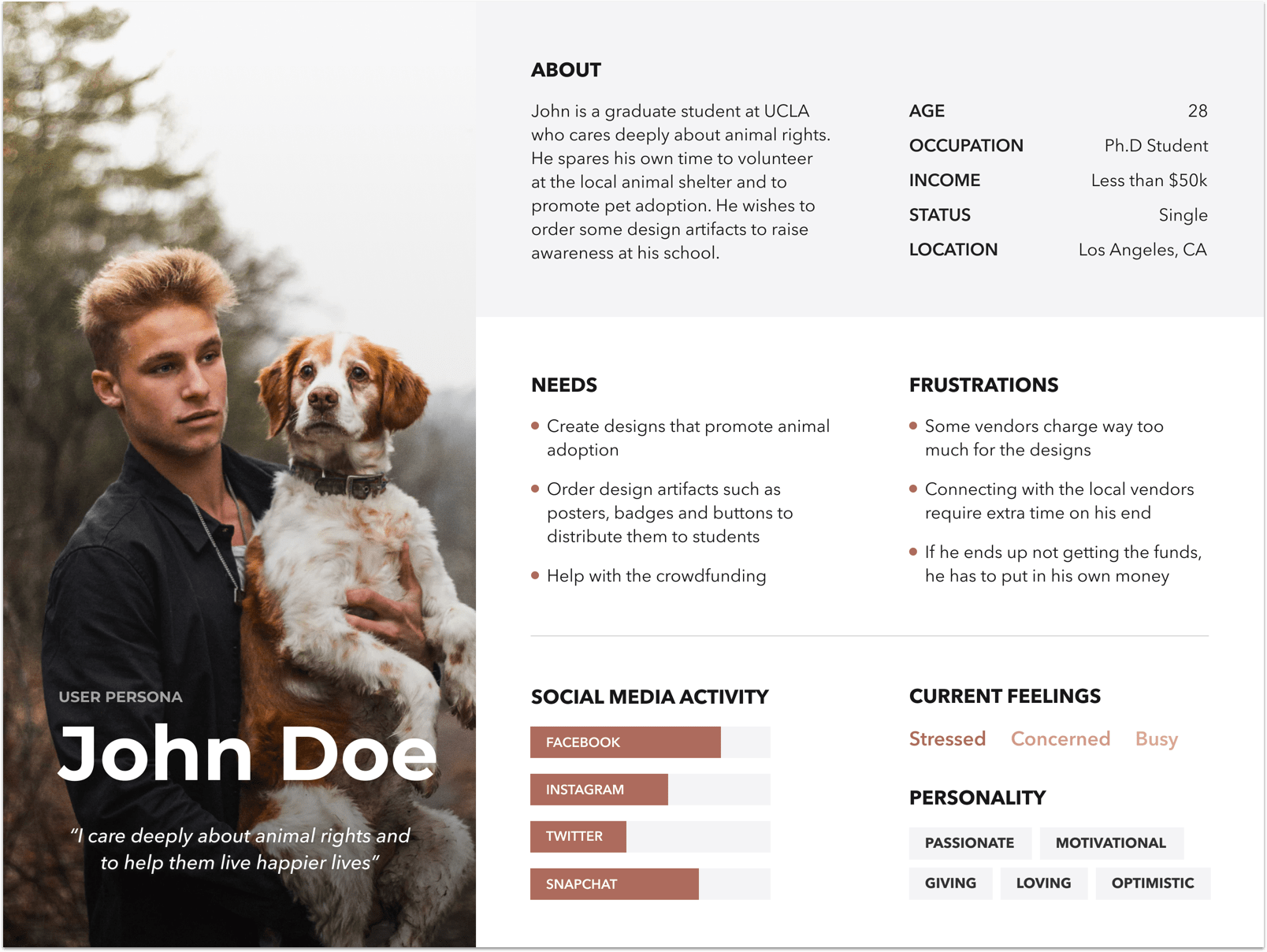
I liked how Fran Mullings summed up this whole buyer persona thing on Quora. Sounds like some kind of market intelligence:
In a B2B setting, you should explore things like job title, skills required for the job, company size, and so forth.
In a B2C situation, age, marital status, children, and grandchildren are some areas to explore.
On top of this, you will need to get to the root of the prospects’ biggest challenge: customer preferences, customer expectations, the evaluation process of similar products/services, how they interact with sellers, and how they learn new information.
2. Base your product development strategy on customer behavior
Having a dialogue with people means actually being able to ask them what they want and give it to them.
A true customer-centric marketing strategy takes customer stories and puts them right into action—to all the decisions about further product development. All the new features, all the improvements, every single button on your website—all this is there because clients wanted it there.
We at HelpCrunch have developed this whole system of collecting and categorizing all the feature requests that we get:
- First, we mark every single chat with feature requests with the corresponding tag—‘feature request.’
- If different users request a particular feature more than 20 times, we create a separate tag. For instance, one of our all-time favorites is a chatbot (which we’re working on right now).
- We also keep a separate Google Spreadsheet for ALL the requests. Even if someone asked us for some feature only once, you can be sure it will end up in our doc.
- We plan our two-week sprints based on these requests we get, taking a good mixture of popular and easy-to-implement ones into work.
3. Invest in customer service
In a customer-centric marketing strategy, service plays one of the most important roles. Just think about it. Your focus is on clients, all you care about are their needs, goals, and enjoyable experiences. So, how do you actually approach them to get a deep understanding of the customer journey? How do you build the needed level of trust and have an open dialogue? Service is the answer.
There’s this whole thing called a ‘customer service-oriented culture,’ which basically means that a company focuses on clients and their requirements and needs, values them over anything else, and responds to them quickly and efficiently. This mindset doesn’t concern just your customer support team; it should be implemented everywhere throughout your business.
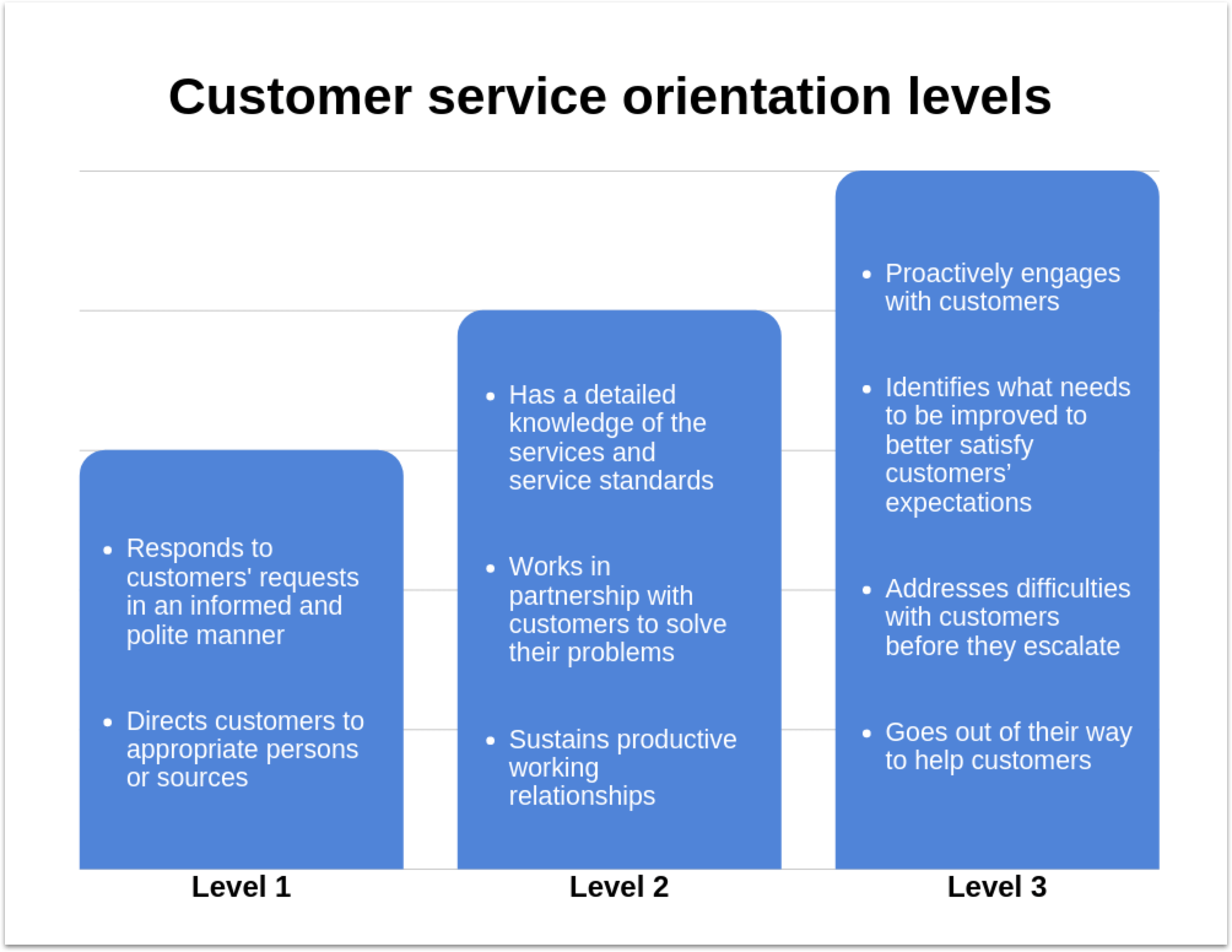
The most important thing here is to make your support as fast and effective as possible:
- Install a live chat tool like HelpCrunch to your website to give your clients a real-time way to get in touch with you. Just keep your first response time under 1 minute (you heard it right).
- Keep an eye on social media mentions because that’s where people go to express their frustration;
- Build an effective knowledge base for those who want to find answers by themselves;
- Always keep track of positive experience level, which should be measured after people have contact with your support team;
- Pay particular attention to gathering all the feedback that you can.
4. Know your existing clients better than you know yourself
While a buyer persona is an umbrella pattern of your potential buyers’ traits and peculiarities, you can also rely heavily on your existing clients. Because they are real, flesh-and-blood human beings who actually use your product and can give you tons of great material to work with.
There are several channels to collect useful information:
- Data your clients give you while signing up – subscription types, registration date, account balance, etc.
- Your service team collects data while communicating with people – common pitfalls, feature requests, positive reviews, and overall feedback.
- Data your tool collects by default. For instance, HelpCrunch tracks recent activity, location, browser language, etc, to give your support agents as much context as possible.
You might ask why you need so much data about people who have signed up already. Because having first clients means not only a good cause for happiness but more work for your marketing team.
The minute someone leaves you their email address is the minute your team starts making sure they stick with you:
- The satisfaction rate should be tracked and verified regularly and be no less than 73%.
- Your onboarding process should explain every single feature in the slightest detail to minimize your churn rate;
- Pay particular attention to retention, including everything from high-quality service to rewards program.
You see, a true customer-driven strategy means devoting your existing loyal customers as much time as you spend on attracting new leads.
5. Make word-of-mouth your main marketing force
You know how the old saying goes—what goes around comes around. Basically, when you’re good to people, people are good to you, too. I
f they feel like your company is everything they’ve ever dreamt of, that you hear their questions and always go the extra mile to help them, they will pay you back. Such a happy customer will start recommending your company to their friends and colleagues; they will endorse you on social media and leave positive comments all over the internet. It’s called customer loyalty. Isn’t it a dream?
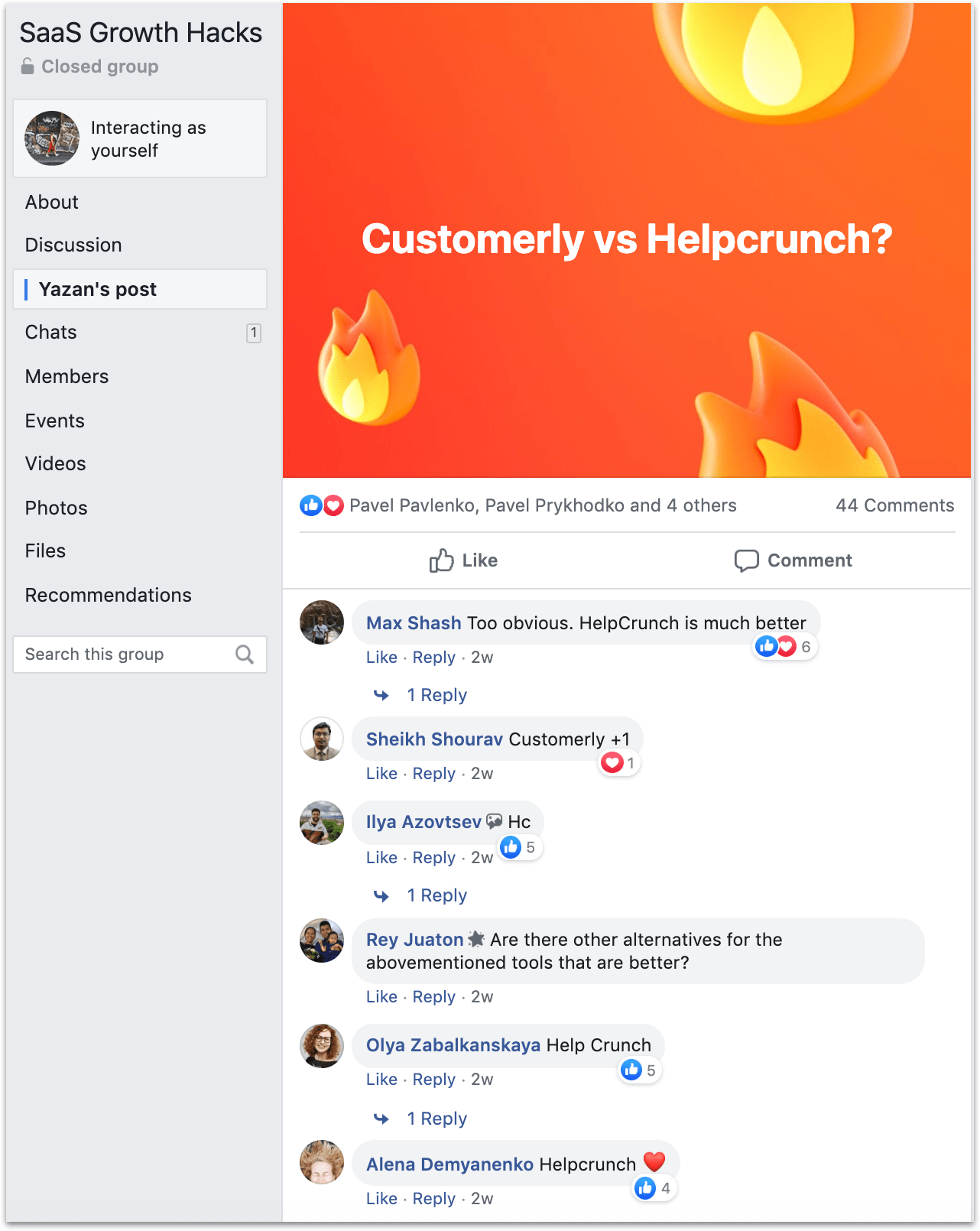
- Encourage your existing clients to leave reviews on corresponding websites. This can be a part of your service or even the sales team’s job. If someone says positive stuff in chat, why not ask them to repeat it on Capterra or G2 (or whatever customer review website is relevant for your niche)?
- Create your referral program. You can reward your satisfied customers for bringing new people to you with things like a slight discount, vouchers, and upgrading their subscription for free.
- Create an affiliate program. You can create this whole net of affiliate websites. Your partners will get some percentage from every deal you make with someone following the link on their website.
You don’t need to sit and wait until people come and share their customer insights, as there are many ways to start a conversation and collect feedback first.
You can use HelpCrunch for customer service automation to send automated email campaigns to different segments of your clients. For instance, you can target clients who rated their chat experience as ‘great’ to ask them for reviews or offer to participate in your affiliate program.
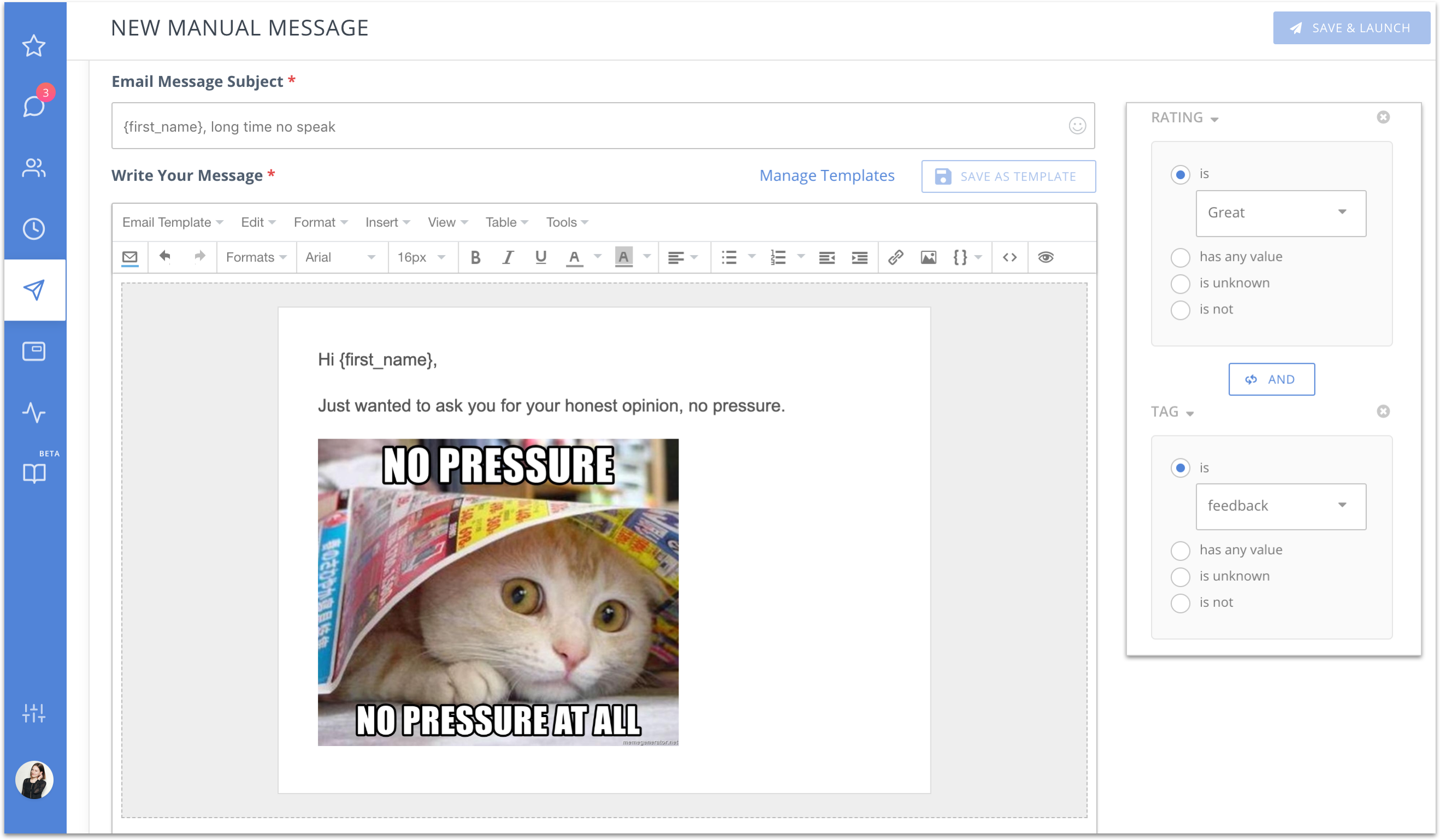
Conclusion
At the end of the day, we all want to produce a positive customer experience when they use our products or services. That’s why it makes even more sense to concentrate on those experiences in your marketing strategy rather than pursue some made-up campaigns based on nothing.
You won’t need tons of fancy marketing tools if you create top-notch service, stay attentive to your clients, and just give them exactly what they ask for. That should be all the marketing you need.




